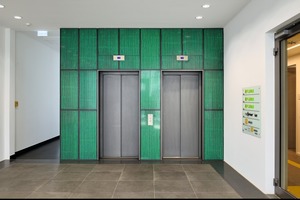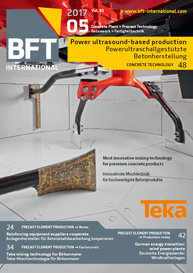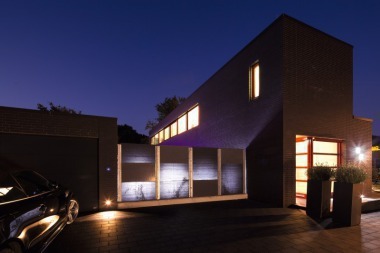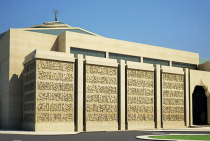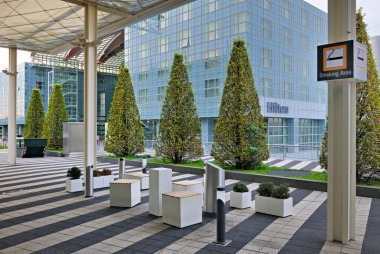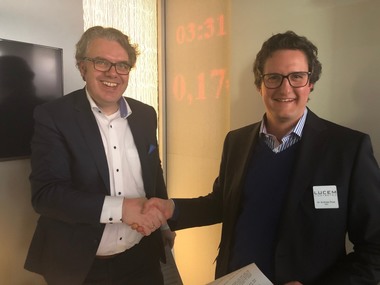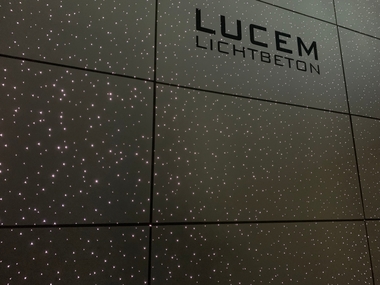Light-transmitting concrete for the German headquarters of Flixbus
Flixbus is among the market leaders in Germany with one of the most extensive intercity bus offerings in Europe. The interior architecture of the new Flixbus German headquarters in Munich was designed to reflect the company’s innovative strength, and to be inviting and discreetly prestigious at the same time. Allmann Sattler Architects, from Munich, met these expectations by using Lucem light-transmitting concrete as elevator cladding and as a special highlight to accentuate the floor design – as well as for the washbasin countertops in the toilets.
Light-transmitting panels
as elevator cladding
Lucem light-transmitting concrete opens up innovative design options for exceptional wall cladding, flooring, as well as furniture such as washbasin countertops. By means of embedded fiber-optic tubing, the translucent concrete transmits the light of the rear-side illumination to the surface and in this way shines and glows from the inside to the outside.
Lucem light transmitting panels were installed as floor-to-ceiling elevator cladding in all eight stories of the two wings of the building, in a maximum format of 120 cm x 60 cm and a thickness of 15 mm – as rear-ventilated curtain-wall cladding, with use of the installation space for the lighting systems. Apart from cladding for the 16 elevators, floor elements 120 x 25 mm in size and 25 mm thick were installed in the reception area of the ground floor. In addition, all of the toilet facilities were provided with 48 Lucem light-transmitting washbasin countertops 160 x 60 cm in size, with a thickness of 20 mm.
LED panels and light-transmitting concrete
LED panels were used as elevator cladding consisting of light-transmitting concrete. These modules were manufactured for perfect fit and were delivered for every light transmitting panel.
The integrated special LED systems allow the Lucem light-transmitting concrete panels to glow in white or colored light in up to 16 million possible colors. Light scenarios as sequences or with changing colors can also be programmed. The light scenarios on the elevator cladding can be individually programmed for each story. Control of the lighting system by the elevator button always switches on the illumination when a person waits for the elevator. A motion sensor, in addition, produces alternating colors in the elevator cladding when persons walk past.

